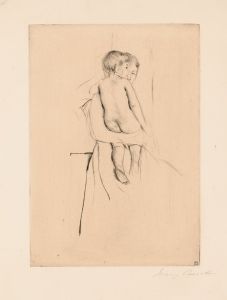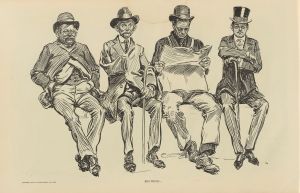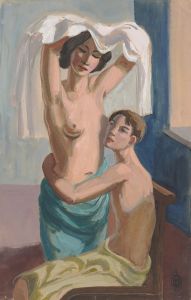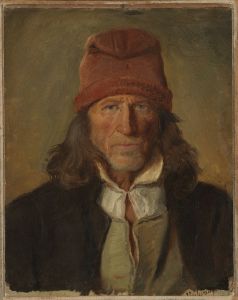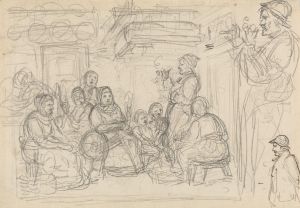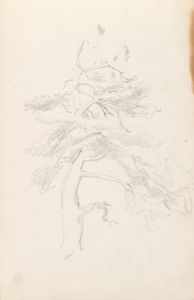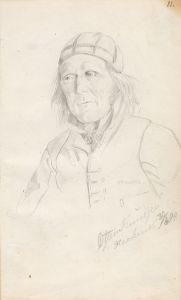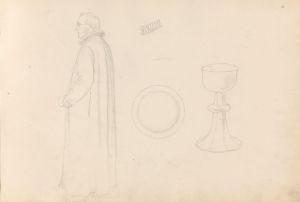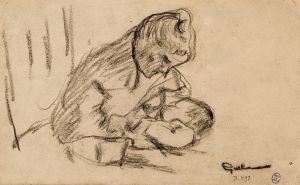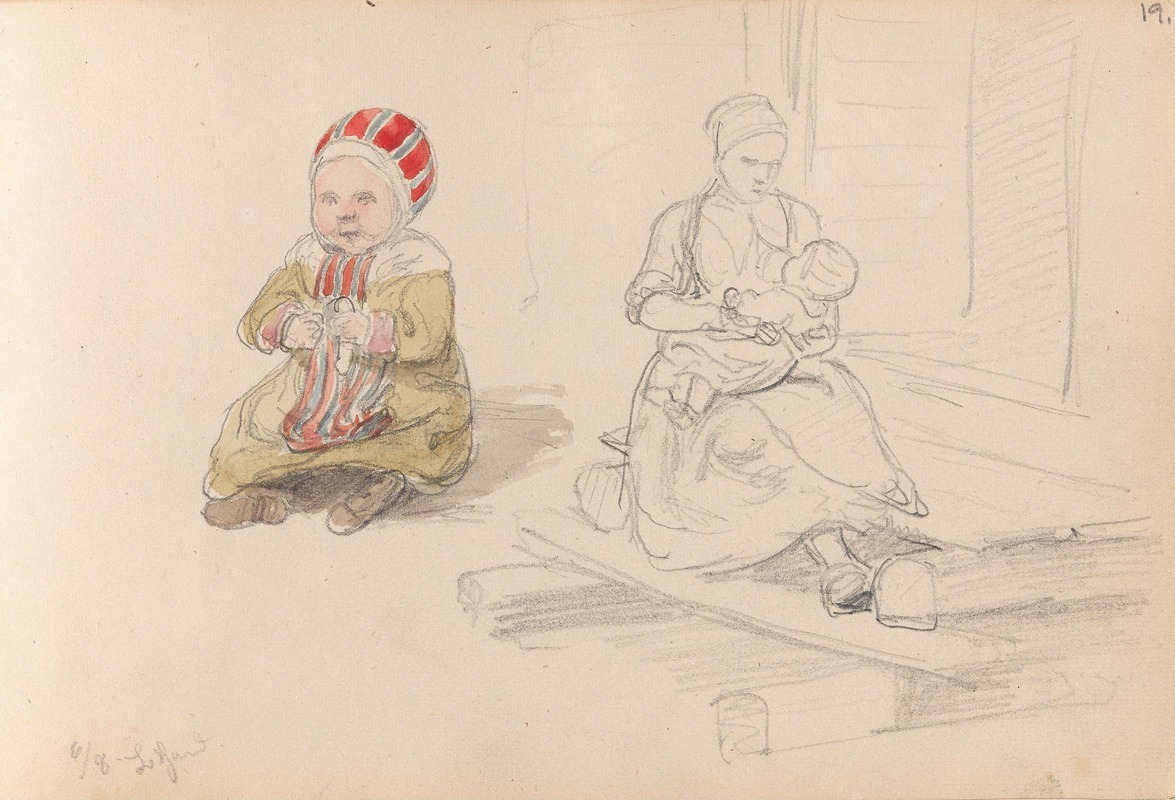
Sittende barn; mor som ammer sitt barn, Leksand
A hand-painted replica of Adolph Tidemand’s masterpiece Sittende barn; mor som ammer sitt barn, Leksand, meticulously crafted by professional artists to capture the true essence of the original. Each piece is created with museum-quality canvas and rare mineral pigments, carefully painted by experienced artists with delicate brushstrokes and rich, layered colors to perfectly recreate the texture of the original artwork. Unlike machine-printed reproductions, this hand-painted version brings the painting to life, infused with the artist’s emotions and skill in every stroke. Whether for personal collection or home decoration, it instantly elevates the artistic atmosphere of any space.
Adolph Tidemand (1814–1876) was a prominent Norwegian painter known for his depictions of Norwegian folk life and traditions. One of his works, Sittende barn; mor som ammer sitt barn, Leksand (translated as Seated Child; Mother Nursing Her Child, Leksand), reflects his interest in capturing everyday scenes and cultural practices. The painting is believed to have been created during or inspired by Tidemand's travels in Scandinavia, particularly in the Dalarna region of Sweden, where Leksand is located.
Tidemand often traveled to rural areas to study local customs, costumes, and traditions, which he then incorporated into his art. His works are characterized by their detailed and realistic portrayal of people and their surroundings, often emphasizing the simplicity and dignity of rural life. In this painting, the focus is on a mother nursing her child, a tender and intimate moment that highlights the universal theme of maternal care. The seated child nearby adds to the familial atmosphere, creating a scene that is both personal and relatable.
The setting of the painting, Leksand, is a town in the Dalarna region known for its rich cultural heritage and traditional Swedish folk costumes. Tidemand's attention to detail in depicting clothing and surroundings suggests that he aimed to document and preserve the cultural identity of the region. This aligns with his broader artistic mission of celebrating and preserving the traditions of Scandinavian rural life during a time of increasing industrialization and modernization.
While this painting is not as widely recognized as some of Tidemand's other works, such as Haugianerne or Brudeferden i Hardanger (created in collaboration with Hans Gude), it nonetheless exemplifies his skill in capturing human emotion and cultural specificity. The use of light and composition in the painting draws attention to the central figures, emphasizing the bond between mother and child.
As with many of Tidemand's works, Sittende barn; mor som ammer sitt barn, Leksand serves as both an artistic achievement and a historical document, offering insights into the daily lives and traditions of 19th-century Scandinavian communities.





